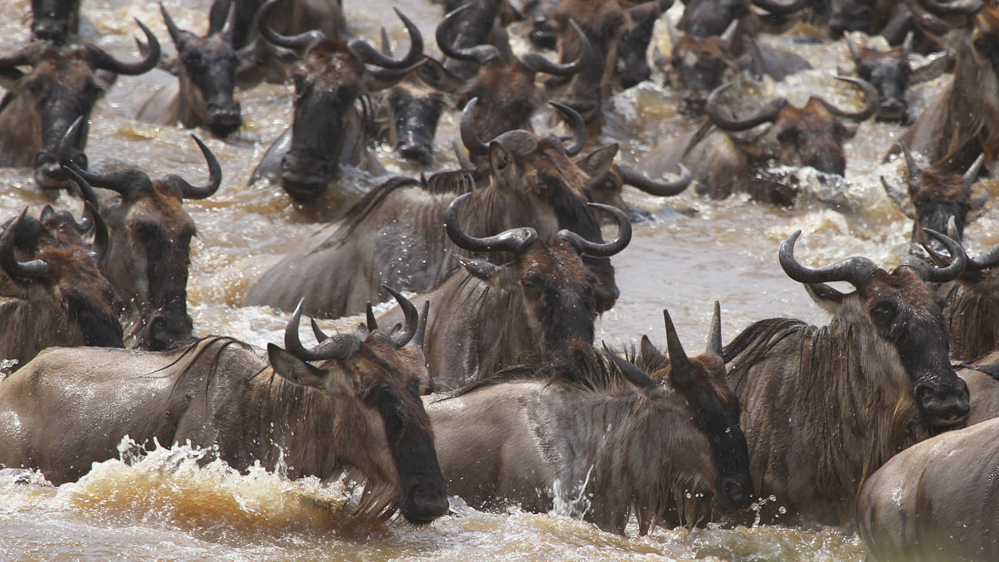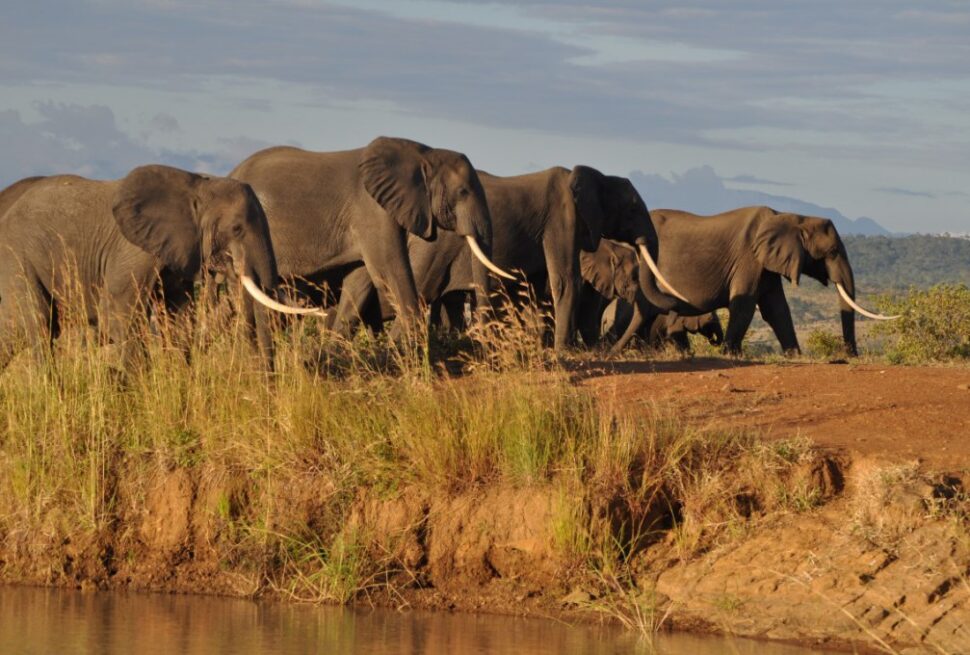Imagine standing on the golden plains of the Serengeti, surrounded by thousands of wildebeests, zebras, and gazelles on the move. The earth trembles beneath them. Predators stalk silently nearby. This isn’t just a safari—it’s nature’s greatest show on Earth.
The Great Wildebeest Migration is the largest overland animal migration in the world. Every year, more than 1.5 million wildebeests, 200,000 zebras, and thousands of gazelles embark on a 1,000-kilometer journey across Tanzania and Kenya. Following the rains and fresh grazing pastures, this cycle of life and death is one of the most breathtaking wildlife spectacles on the planet.
If you’re planning a Tanzanian safari in 2025, here’s everything you need to know about when, where, and how to experience the migration for yourself.
When and Where to Witness the Wildebeest Migration
The migration is a year-round event, but its highlights vary by season and region. Here’s a simplified month-by-month guide:
| Month | Location | What Happens |
|---|---|---|
| Jan – Mar | Ndutu (South Serengeti) | Calving season: 500,000 calves born, predator hotspot |
| Apr – May | Central & Western Serengeti | Herds begin moving northwest, lush scenery, fewer tourists |
| Jun – Jul | Western Corridor, Grumeti | First river crossings (Grumeti), predator action builds |
| Aug – Oct | Northern Serengeti, Kogatende | Iconic Mara River crossings, intense predator activity |
| Nov – Dec | Returning south via Lobo | Herds move back south with short rains, excellent viewing |
Why the Wildebeest Migration is So Special
The migration isn’t just about movement—it’s an ancient survival journey filled with danger, instinct, and drama.
What Makes It Unique:
- Scale: Over 2 million animals participate, including wildebeests, zebras, and gazelles.
- Cycle of Life: From birthing to predation, every aspect of the animal kingdom plays out.
- Unscripted Drama: No two crossings are ever the same—anything can happen.
What You’ll Witness:
- Calving Season: Watch newborns take their first steps… and predators lurking nearby.
- River Crossings: See thousands of animals dive into crocodile-infested rivers.
- Predator Encounters: Lions, cheetahs, leopards, and hyenas following the herds.
- Vast Landscapes: Endless savannas, dramatic skies, and golden sunsets.
Best Places to See the Wildebeest Migration in Tanzania
Timing your visit right is key to catching the most dramatic moments of the migration. Below are top regions to consider, depending on the month:
1. Ndutu Plains (Dec – Mar)
- Location: Southern Serengeti / Ngorongoro Conservation Area
- Highlights:
- Peak calving season (Feb)
- Excellent predator sightings
- Fewer crowds, wide-open spaces
2. Seronera – Central Serengeti (Apr – May)
- Location: Central Serengeti
- Highlights:
- Beautiful green landscapes after the rains
- Big cat action (lions, leopards, cheetahs)
- Resident game mixed with migrating herds
3. Western Corridor (Jun – early Jul)
- Location: Grumeti River area
- Highlights:
- First river crossings with crocodile danger
- Excellent birdwatching and varied terrain
- Fewer tourists than northern sites
4. Kogatende & Lamai Wedge (Jul – Oct)
- Location: Northern Serengeti
- Highlights:
- Iconic Mara River crossings
- High drama with crocodiles and predators
- Prime season for photographers and filmmakers
Travel Tips: Planning the Perfect Migration Safari
To get the most out of your wildebeest migration experience, planning ahead is essential. Here are some insider tips:
When to Book:
- 6 to 12 months in advance for peak season (July – October)
- Last-minute deals possible in shoulder months (April, November)
What to Pack:
- Lightweight, breathable clothing in neutral colors
- Binoculars and a long-lens camera
- Wide-brimmed hat and sunscreen
- Comfortable walking shoes or boots
- Insect repellent (especially during rainy seasons)
Why Travel with a Local Safari Company:
- Local guides track herd movements in real time
- Flexible itineraries tailored to the migration route
- Insider access to remote lodges and mobile camps
Why 2025 is the Perfect Year to Go
Several factors make 2025 an ideal time to witness the Great Migration in Tanzania:
- Stable travel conditions post-pandemic
- Improved infrastructure and access to remote regions
- Emergence of new mobile camps tailored for migration tracking
- Continued commitment to conservation tourism
Additionally, traveling in 2025 means you can take advantage of new technology for tracking wildlife, including real-time apps and GPS reports provided by experienced local safari operators.
Plan Your Wildebeest Migration Safari with Africa Wandering Peak Safaris
At Africa Wandering Peak Safaris, we specialize in tailor-made migration journeys based on your travel dates, interests, and desired level of comfort. Whether you want to:
- Witness calving season in Ndutu
- Photograph the chaotic Mara River crossings
- Or enjoy a private tented camp under the stars
…we’ll build your ideal itinerary.
Why Choose Us:
- Expert local guides with real-time wildlife tracking
- Handpicked safari lodges and mobile camps
- Flexible departures and custom routes
- 24/7 support from the planning stage to your return home
Final Thoughts
The Great Wildebeest Migration is more than just a spectacle—it’s a deep, humbling reminder of how wild and beautiful our planet truly is. From newborn calves taking their first steps to nail-biting river crossings, the journey of the wildebeests is filled with unforgettable moments.
In 2025, make it your year to experience the migration firsthand—on the ground, in the heart of Africa, with expert guides by your side.
Contact Africa Wandering Peak Safaris today to start planning your dream safari. The migration is calling. Will you answer?



